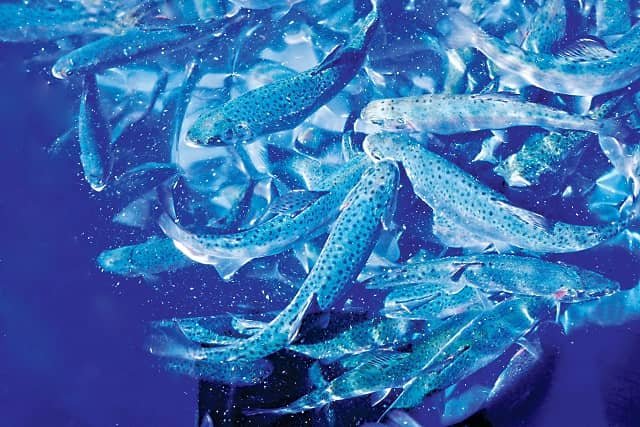
Various studies have reported that microalgae biomass or extracts, along with their bioactive compounds, can be employed as nutraceuticals or additives in food products and health supplements.
Likewise, therapeutic effects of bioactive compounds from microalgae have been reported to enhance insulin sensitivity, attributed to their antioxidant, anti-inflammatory, and protective properties on pancreatic β-cells.
In this regard, a team of researchers from Universiti Kebangsaan Malaysia (UKM) published a scientific review that compiles findings from in vitro, in vivo, and human studies to discuss the effects of microalgae and their bioactive compounds on diabetes mellitus and the involved mechanisms.
Additionally, the researchers discuss limitations and future prospects for developing microalgae-based compounds as supplements for diabetes mellitus management.
Diabetes Mellitus
Diabetes mellitus is a metabolic disorder characterized by hyperglycemia due to altered insulin secretion, insulin resistance, or both, and is related to disorders in carbohydrate, lipid, and protein metabolism.
Furthermore, diabetes mellitus can be classified into type 1 diabetes mellitus (DM1), type 2 diabetes mellitus (DM2), and gestational diabetes.
Effects of Microalgae on Diabetes Mellitus
In vitro Studies
Research into the effects of microalgae or their bioactive compounds in vitro has primarily focused on determining their ability to inhibit digestive enzymes associated with postprandial hyperglycemia or to modulate enzymes or transcription factors involved in glucose metabolism.
According to various studies, microalgae such as Arthrospira platensis, Nannochloropsis oculata, Porphyridium purpureum, and Chlorella vulgaris have potential antidiabetic properties through the inhibition of diabetes-related enzymes and alleviation of oxidative stress.
Stay Always Informed
Join our communities to instantly receive the most important news, reports, and analysis from the aquaculture industry.
The studies report that the contents of polyphenols and carotenoids in microalgae extracts contribute to these potential antidiabetic properties, mainly due to their antioxidant, anti-inflammatory, and anti-apoptotic properties.
On the other hand, researchers have also investigated the antioxidant and anti-diabetic properties of enzymatic hydrolysates derived from A. platensis‘ phycobiliproteins. Isolated proteins from A. platensis can be hydrolyzed into bioactive peptides with inhibitory properties.
In vivo Studies
Several in vivo studies have evaluated the effects of microalgae bioactive compounds in mouse models characterized by high blood glucose levels.
Studies have reported that A. platensis alleviates hyperglycemia in diabetic rats mainly due to its antioxidant and anti-inflammatory activities.
“It has been demonstrated that the anti-inflammatory property of A. platensis is involved in the protection of pancreatic β-cells,” the researchers highlighted.
Likewise, studies emphasize that A. platensis extract improves glucose tolerance in diabetic rats, positively affecting gut microbiota composition.
Furthermore, supplementation with N. oculata corrected hyperglycemia and hyperlipidemia in diabetic rats. Supplementation with 10 or 20 mg/kg/day of N. oculata for 3 weeks in male Wistar rats with STZ-induced diabetes led to increased body weight, serum insulin, and high-density lipoprotein-bound cholesterol (HDL-C).
Additionally, the use of N. gadiatana powder in the diet supplementation of induced diabetic Wistar rats also improved body weight and serum glucose.
Finally, the study also describes the antidiabetic properties of microalgae Chlorella pyrenoidosa, Porphyridium cruentum, Dunaliella salina; and bioactive compounds such as Eicosapentaenoic Acid (EPA) and Docosahexaenoic Acid (DHA), polysaccharides, and astaxanthin.
Limitations of Microalgae
Despite the benefits of microalgae, their use as health supplements to alleviate diabetes mellitus comes with certain limitations.
Among these limitations, the authors of the review noted that only limited research has been conducted for most species of microalgae or their bioactive compounds.
Furthermore, researchers highlight that the effects of other potential microalgae species or their bioactive compounds on diabetes mellitus have not been explored to a great extent.
Researchers also caution that the optimal dosage for most test compounds is largely unknown, and there is no clear verdict on how effective these doses would be as health supplements.
“Finally, some of the clinical trial study designs face limitations in terms of small sample size, absence of placebo groups, and short intervention duration,” they warn.
Conclusion
The researchers conclude that microalgae-based supplementation has the potential to improve diabetes mellitus treatment and recommend further clinical studies in the future.
The study was funded by the Ministry of Higher Education, Malaysia, through the Fundamental Research Grant Scheme (FRGS/1/2018/SKK08/UKM/03/1) and the Faculty of Medicine at Universiti Kebangsaan Malaysia.
Reference (open access)
Tamel Selvan, K.; Goon, J.A.; Makpol, S.; Tan, J.K. Therapeutic Potentials of Microalgae and Their Bioactive Compounds on Diabetes Mellitus. Mar. Drugs 2023, 21, 462. https://doi.org/10.3390/md21090462
Editor at the digital magazine AquaHoy. He holds a degree in Aquaculture Biology from the National University of Santa (UNS) and a Master’s degree in Science and Innovation Management from the Polytechnic University of Valencia, with postgraduate diplomas in Business Innovation and Innovation Management. He possesses extensive experience in the aquaculture and fisheries sector, having led the Fisheries Innovation Unit of the National Program for Innovation in Fisheries and Aquaculture (PNIPA). He has served as a senior consultant in technology watch, an innovation project formulator and advisor, and a lecturer at UNS. He is a member of the Peruvian College of Biologists and was recognized by the World Aquaculture Society (WAS) in 2016 for his contribution to aquaculture.




